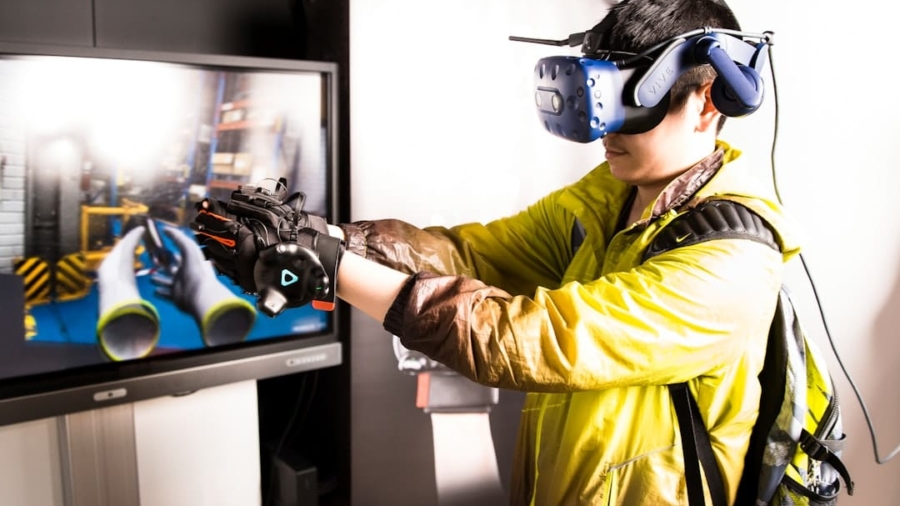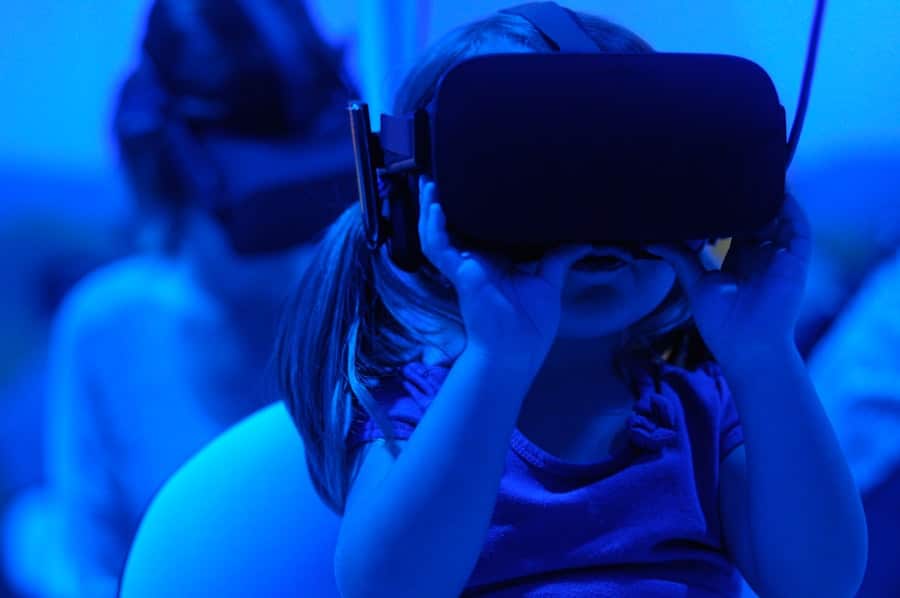Virtual tourism has emerged as a revolutionary concept in the travel industry, leveraging cutting-edge technology to create immersive experiences that allow individuals to explore destinations without physically being there. This innovative approach combines elements of virtual reality (VR), augmented reality (AR), and 360-degree video to transport users to iconic landmarks, natural wonders, and cultural sites from the comfort of their homes. As the world becomes increasingly interconnected through digital platforms, virtual tourism offers a unique solution for those who may be unable to travel due to financial constraints, health issues, or global events such as pandemics.
The rise of virtual tourism has been accelerated by advancements in technology and the growing accessibility of VR devices. With the proliferation of smartphones and affordable VR headsets, more people can engage with virtual travel experiences than ever before. This democratization of travel allows individuals to experience diverse cultures, cuisines, and landscapes, fostering a greater understanding and appreciation of the world.
As a result, virtual tourism is not merely a substitute for physical travel; it is an evolving medium that enhances our relationship with the concept of exploration and adventure.
Key Takeaways
- Virtual tourism offers a new way for people to explore destinations and attractions from the comfort of their own homes.
- Virtual reality in travel planning allows travelers to experience destinations and accommodations before making a booking, leading to more informed decisions.
- Virtual tourism is changing the travel industry by providing immersive experiences and increasing accessibility to destinations for people with physical limitations.
- The future of virtual tourism will continue to impact travel planning by offering more advanced and realistic experiences, potentially reducing the need for physical travel.
- VR enhances destination exploration by providing interactive and engaging experiences, allowing travelers to preview and plan their trips more effectively.
The Benefits of Virtual Reality in Travel Planning
One of the most significant advantages of incorporating virtual reality into travel planning is the ability to preview destinations before committing to a trip. Travelers can explore hotels, attractions, and local experiences through immersive VR tours, allowing them to make informed decisions based on their preferences and expectations. For instance, a traveler considering a stay at a resort in Bali can take a virtual tour of the property, examining the amenities, room layouts, and surrounding landscapes.
This firsthand experience can significantly influence their choice, ensuring that they select accommodations that align with their desires. Moreover, virtual reality can enhance the planning process by providing insights into local customs and cultural practices. Through VR experiences, travelers can engage with local communities, attend virtual festivals, or participate in traditional ceremonies.
By bridging the gap between research and experience, VR empowers travelers to curate personalized itineraries that resonate with their interests.
How Virtual Tourism is Changing the Travel Industry
The advent of virtual tourism is reshaping the travel industry in profound ways. Travel agencies and tour operators are increasingly integrating VR technology into their offerings, allowing potential customers to experience destinations before booking. This shift not only enhances customer engagement but also provides businesses with a competitive edge in a crowded marketplace.
For example, companies like Thomas Cook have begun utilizing VR headsets in their stores, enabling customers to embark on virtual journeys to popular destinations like Paris or New York City while discussing travel options with agents. Additionally, virtual tourism is redefining marketing strategies within the industry. Destinations are leveraging VR content to showcase their unique attractions and experiences, creating captivating promotional materials that resonate with potential visitors.
For instance, cities like Dubai have invested in VR campaigns that allow users to explore iconic landmarks such as the Burj Khalifa or the Palm Jumeirah from anywhere in the world. This innovative approach not only captures the attention of prospective travelers but also encourages them to consider these destinations for future trips.
The Future of Virtual Tourism and its Impact on Travel Planning
As technology continues to evolve, the future of virtual tourism holds immense potential for transforming travel planning further. The integration of artificial intelligence (AI) with VR could lead to personalized travel experiences tailored to individual preferences and interests. Imagine a scenario where an AI-driven platform analyzes a user’s past travel history, preferences, and social media activity to curate a bespoke virtual itinerary that highlights destinations and experiences likely to resonate with them.
This level of customization could revolutionize how travelers approach planning their trips. Moreover, advancements in haptic feedback technology may enhance the sensory experience of virtual tourism. By simulating touch and movement, users could feel the textures of local crafts or experience the sensation of walking on sandy beaches during their virtual explorations.
Such innovations would create an even more immersive experience, blurring the lines between virtual and physical travel. As these technologies become more mainstream, they will likely influence how travelers perceive and engage with destinations long before they set foot there.
The Role of VR in Enhancing Destination Exploration
Virtual reality plays a crucial role in enhancing destination exploration by providing users with interactive experiences that go beyond traditional travel guides or brochures. Through VR applications, travelers can embark on guided tours led by local experts who share insights about historical sites, cultural practices, and hidden gems within a destination. For example, a user interested in ancient Rome could don a VR headset and join a virtual archaeologist on a tour of the Colosseum, learning about its construction and significance while virtually walking through its grand arches.
Furthermore, VR technology allows for exploration of remote or hard-to-reach locations that may be challenging for travelers to access physically. For instance, individuals can virtually dive into the Great Barrier Reef or hike through the Amazon rainforest without leaving their homes. This capability not only broadens the scope of exploration but also raises awareness about environmental conservation efforts in these fragile ecosystems.
By experiencing these natural wonders virtually, users may develop a deeper appreciation for their beauty and urgency in protecting them.
The Rise of Virtual Reality Travel Experiences
Immersive Cultural Experiences
Companies specializing in VR content creation are developing immersive experiences that allow users to participate in activities such as cooking classes with renowned chefs or guided art tours through famous museums. These experiences provide an engaging way for individuals to learn about different cultures while enjoying interactive elements that traditional media cannot offer.
Global Cultural Events at Your Fingertips
Platforms like Oculus have introduced VR experiences that allow users to attend live concerts or cultural events from around the world. Imagine being able to virtually attend a music festival in Coachella or witness a traditional dance performance in Bali without leaving your living room. Such experiences not only cater to those unable to travel but also create opportunities for cultural exchange and understanding on a global scale.
A World of Virtual Experiences Ahead
As more creators enter this space, we can expect an expanding array of virtual experiences that cater to diverse interests and preferences.
Virtual Tourism: A Tool for Sustainable and Responsible Travel
Virtual tourism presents an opportunity for promoting sustainable and responsible travel practices by reducing the environmental impact associated with physical travel. With concerns about carbon emissions from air travel and overtourism affecting popular destinations worldwide, virtual tourism offers an alternative that allows individuals to explore without contributing to these issues. By engaging with destinations virtually, travelers can satisfy their wanderlust while minimizing their ecological footprint.
Additionally, virtual tourism can serve as an educational tool for promoting responsible travel behaviors. Through immersive experiences that highlight local cultures and environmental challenges faced by specific regions, users can gain insights into the importance of sustainable practices when visiting these areas physically. For example, a virtual tour of a wildlife sanctuary could emphasize conservation efforts and responsible wildlife interactions, encouraging travelers to adopt similar principles during their actual visits.
Overcoming Challenges and Limitations of Virtual Tourism in Travel Planning
Despite its many advantages, virtual tourism faces several challenges and limitations that must be addressed for it to reach its full potential in travel planning. One significant hurdle is the technological divide; not everyone has access to high-quality VR equipment or reliable internet connections necessary for optimal experiences. This disparity can create inequalities in who can benefit from virtual tourism offerings, limiting its reach and impact.
Moreover, while virtual tourism provides valuable insights into destinations, it cannot fully replicate the sensory experiences associated with physical travel—such as the smells of local cuisine or the sounds of bustling markets. As such, some travelers may find it difficult to rely solely on virtual experiences when planning trips. To overcome these limitations, industry stakeholders must focus on creating accessible content that caters to various demographics while continuously improving technology to enhance immersion and realism in virtual environments.
In a related article on or explore the top trends on YouTube for 2023.
FAQs
What is virtual tourism?
Virtual tourism is the use of virtual reality (VR) technology to explore and experience travel destinations from the comfort of one’s own home. It allows users to immerse themselves in a virtual environment that simulates real-world locations.
How does VR revolutionize travel planning?
VR revolutionizes travel planning by providing a more immersive and interactive way for travelers to research and experience potential destinations. It allows users to virtually explore hotels, attractions, and landmarks, helping them make more informed decisions about their travel plans.
What are the benefits of using VR for travel planning?
Using VR for travel planning offers several benefits, including the ability to experience destinations before booking, saving time and money on physical travel, and providing accessibility to individuals with mobility limitations.
How does virtual tourism impact the travel industry?
Virtual tourism has the potential to impact the travel industry by influencing how travelers research and book their trips. It can also provide new opportunities for destination marketing and promotion, as well as enhancing the overall travel experience for consumers.
What are some examples of VR applications in travel planning?
Some examples of VR applications in travel planning include virtual hotel tours, 360-degree virtual tours of attractions and landmarks, and immersive experiences that showcase the culture and atmosphere of a destination.



